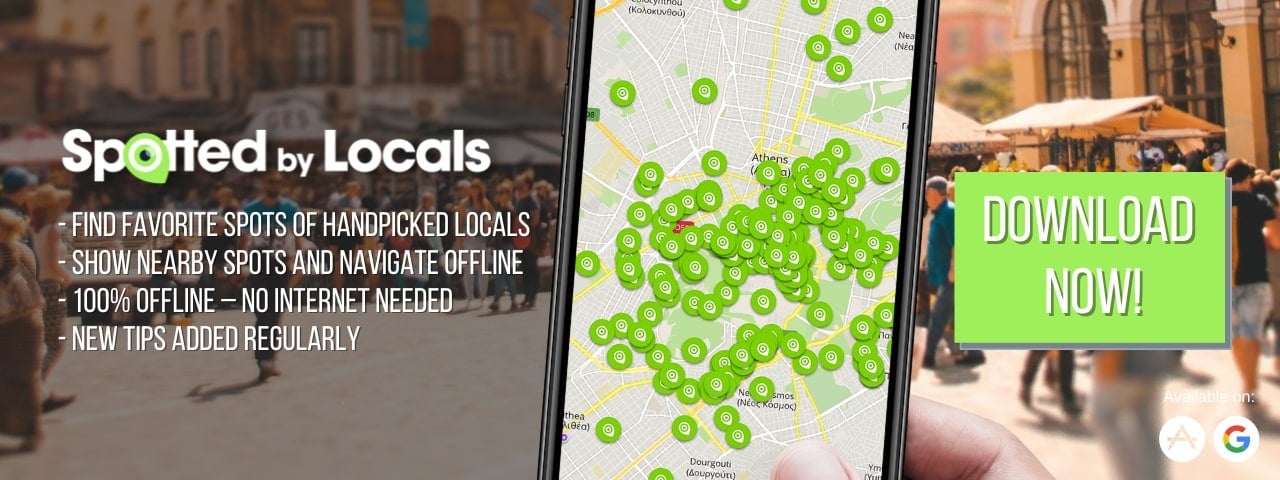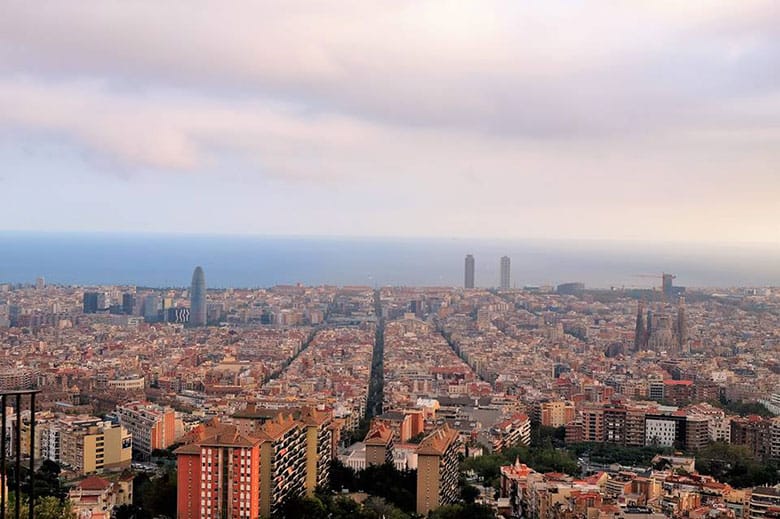
“Hola, benvinguts a Barcelona! Welcome to the Catalan capital. You may think you have arrived in Spain, but mind you, the Catalans have their very own particular culture that you will not find anywhere else. That’s what makes Barcelona so special. The citizens are very proud of their Catalan roots and so the city is bursting with tradition and culture everywhere you look. But the growing international community made Barcelona more open-minded and it is finding its way to modern trends too.
The thing I love about my city is that it is vibrant, bursting with culture and colourful people. It’s a mix between cosmopolitan and laid-back and has mountains and the sea. You get hipster vibes next to full-on Catalan tradition.
I will give you my recommendations if you are here for a short visit. I have been living here for almost 6 years now, so I tend to skip the tourist sights and choose alternative routes. I hope to give you a bit of a local view of this city. However, it may be your first time so I will include the most important touristic highlights here. Enjoy the Barcelona life and emerge yourself with the locals!
Want to discover all spots with us? Download our Spotted by Locals app to discover all spots!
Day 1: 09.00 – 14.00
We start our 48 hours in Barcelona in the Eixample neighbourhood. Eixample is the Catalan word for expansion, and that is exactly what this area is. When old Barcelona burst out of its city walls, the government assigned architect Ildefonso Cerda to plan the city expansion. And with his own particular point of view, he created a 900 block grid inspired by cities like New York. Broad streets and residential areas may not sound that appealing to you but think twice. Eixample was built at the beginning of the 20th century, the era of Catalan modernism!
That makes Eixample one big open-air museum with many beautifully decorated facades of buildings. Modernism is the local equivalent of Art Nouveau and the Catalans take pride in expressing their identity through this art movement. Buildings feature organic shapes, colours and curves, so keep your eyes open and look up! You will see the most beautiful examples of this art movement.
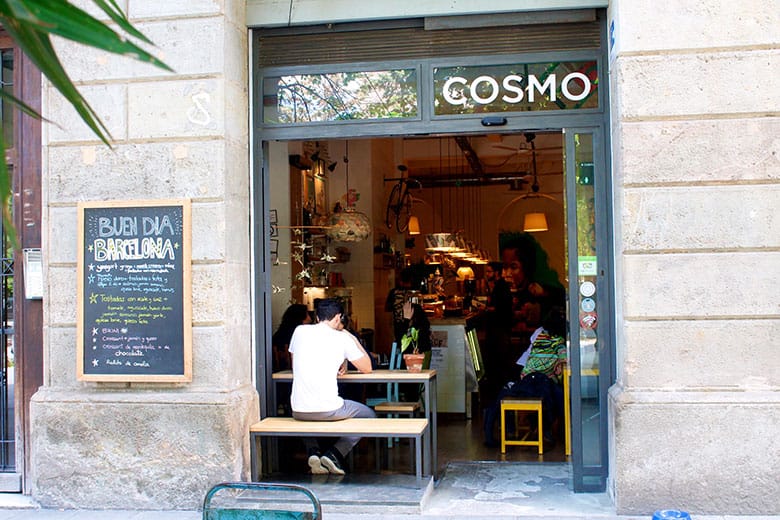
Start with a coffee and cake at Cosmo, a coffee bar with a creative vibe. The walls in the back offer space to upcoming artists and is always an amazing display of alternative art. But apart from that, it’s just a very nice bar, serving the best coffee, and cakes to die for!
After your morning coffee, walk to the most famous street of Eixample; Passeig de Gracia. When you cross Carrer de Balmes, look left and you have a stunning view of the Tibidabo mountain with a small church and theme park on top. Photo moment!
Once arrived at Passeig de Gracia you see the glitter and glamour of Modernism, as this was where the elite went all out in the design of their buildings. Also, on this street, you find two masterpieces of Antoni Gaudi, probably the most famous Modernist architect. My favourite is Casa Batllo – house of bones. You’ll discover skeleton shapes in this building and the dragon skin roof is inspired by Catalonia’s favourite legend; Jordi and the dragon. A bit further up you will find Casa Mila, also a well-known building designed by Gaudi.
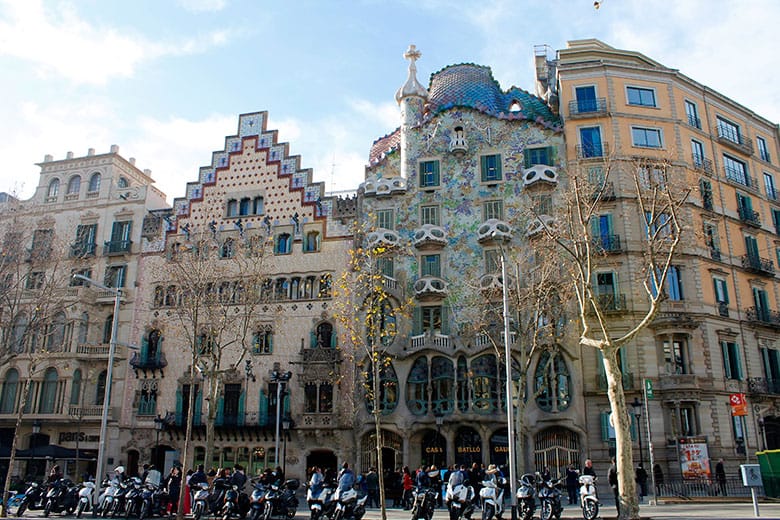
If you’ve never seen La Sagrada Familia before, I can imagine you would like to go! This is the moment to do it, as the church is also based in Eixample. You could walk, but it takes you 5 minutes by metro to get there. Save some energy for later today!
It will be very busy and touristy but to be fair, even if you don’t go inside, Gaudi’s masterpiece is worth your time. It is still under construction so always changing and so full of detail that you keep discovering new things on the exterior of the church.
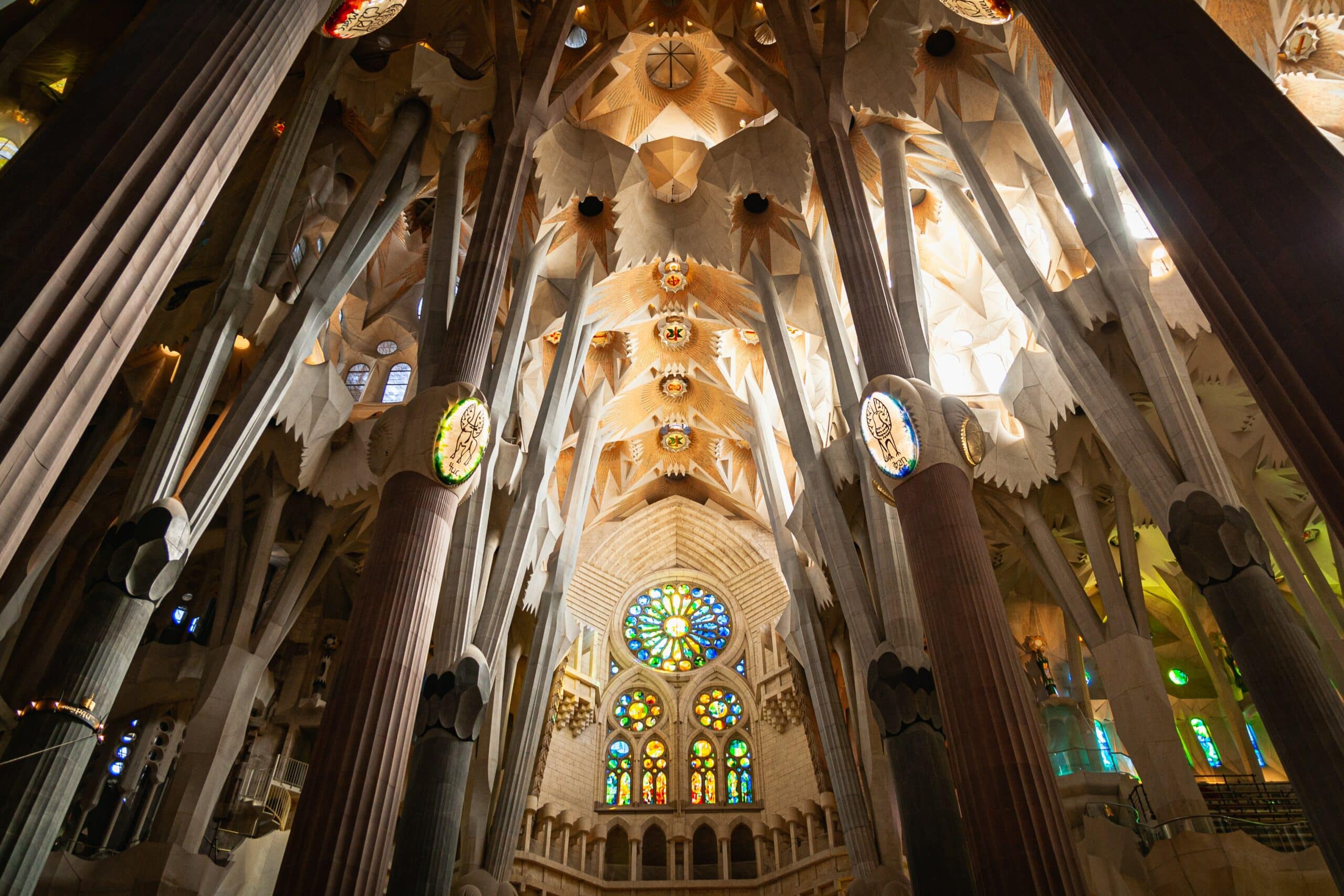
If you think; been there done that or you have some time left, walk up Avinguda Gaudi towards Hospital San Pau. This historical hospital is also completely designed in Modernism style and a true beauty to admire!
After visiting La Sagrada Familia it is time to go to Passeig De Sant Joan. It’s a long street, but go down a bit until you are at the height of Carrer d’Aragó. This is where foodie heaven starts, as this street is hot and happening at the moment. More and more new places open their doors and there is a lot to choose from. One of my personal favourites is Granja Petit Bo. But honestly, all around that little place, you will find more delicious lunch spots! Join in with the local hipsters here, because tourists don’t tend to wander off to this street!
Day 1: 14.00 – 19.00
Once you finished lunch it is time to get ready for a walk up to Bloc District for some climbing and caffeine. You can either walk there or take the bus if you want to save your energy for this sporty afternoon. Bloc District is a wall climbing oasis in the middle of the city, with an extremely good speciality coffee shop and healthy food! This is the perfect mix of extreme sports and good shots of caffeine!
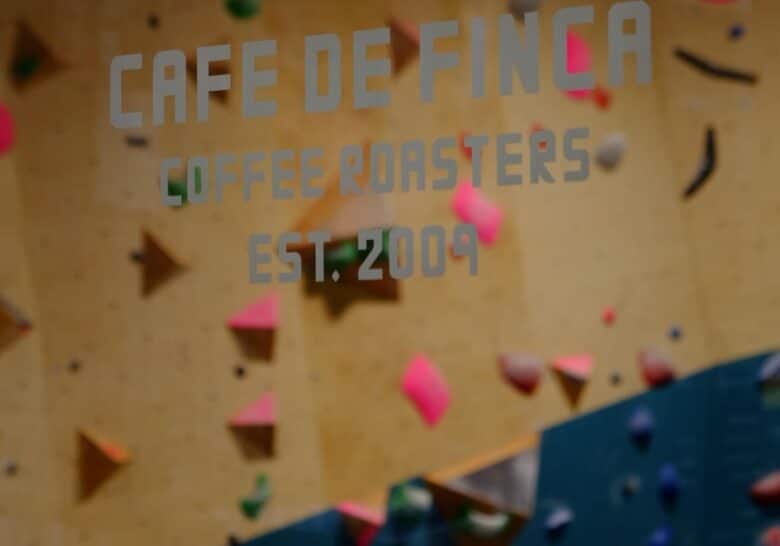
Day 1: 19.00 – …
After a little climbing adventure, it’s time to discover Raval, or as we call it “Ravalear”. Raval used to have a bad reputation, the dodgy area of the city you should not enter. But it has already passed the stage of ‘upcoming’ and is now becoming quite popular. And although it is still a bit edgy, trendy and traditional places go hand in hand. And this is exactly what I love about Raval; old and new come together here.
Start at Las Ramblas and from there enter Raval through Carrer d’Elisabets. This old street leads you to Placa del Angel where you see the gorgeous contrast between historical buildings and modern architecture. The big white building is MACBA, the museum for modern art. The square is the domain of skaters, who give the alternative twist to this area.
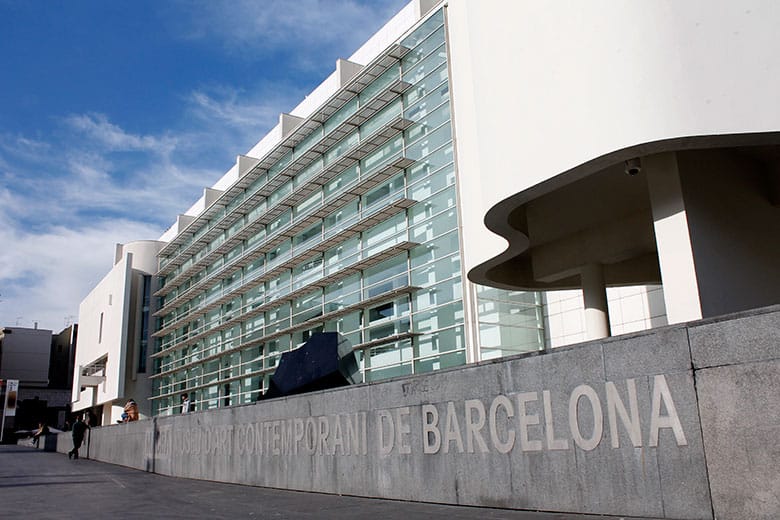
While browsing through Raval you may think all there is for dinner is kebab. And although there’s a delicious kebab place there, Bismillah, tonight I would recommend you to discover the trendy side of Raval. Be aware that Spaniards eat very late, so try not to have dinner before 21:00h
Known as one of the best vegetarian restaurants in town and joining in on the superfood trend, is Flax and Kale. This beautifully designed place gives you the healthiest menu in town and as a non-vegetarian, I can promise you; that it’s all amazing! Another popular place is Fabrica Moritz, an old beer factory of the Barcelona beer brand Moritz, where you can have delicious tapas apart from the best beers in town.
After dinner, it is time for a bar crawl, because Raval is the best place for that if you’d ask me! Especially Carrer de Joaquin Costa has a very high density of bars. You could try to visit all of them, bottom to the top of the street. It might be a bit too much though, so I’d recommend Betty Ford’s or 33|45 for some drinks with the edgy yet trendy crowd of Raval. If you prefer a terrace, check out La Monroe, next to the Filmoteca de Catalunya. This terrace offers you a view of the colourful locals of Barcelona and other than that the best nachos in town. If you’re a cinema fanatic, check out if the Filmoteca has a nice classic one programmed; the movies are screened here in their original language.
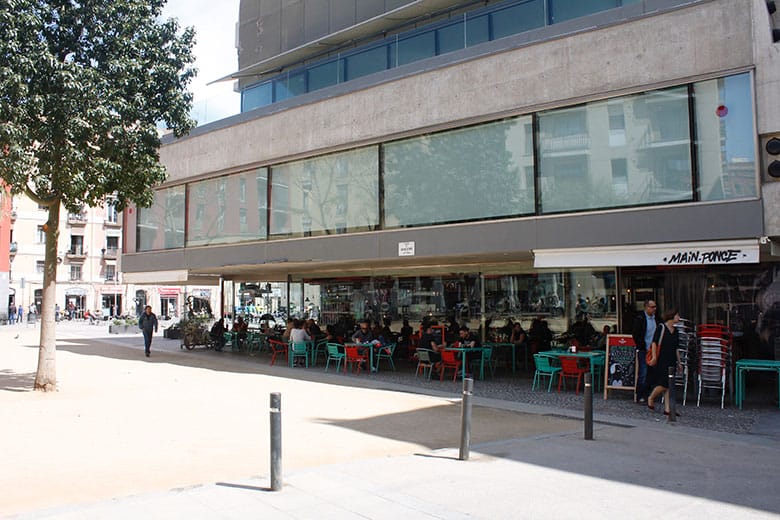
If you like clubbing, be aware that the clubs don’t get busy before 02:00 am. So stay in the bars as long as you can, or you might end up on an empty dancefloor. When you are in Raval, head towards Sala Apolo if you want to find a club where the locals go and dance until the early hours…
Day 2: 09.00 – 14.00
Start your second day in the old fishermen’s neighbourhood Barceloneta. This is the area with the city beaches, so it tends to get very crowded during the day. That’s why I prefer to walk down the boulevard here in the morning.
When you walk down Passeig de Joan de Borbó, you pass the luxurious yachts on your way to the beach. Make a pit stop at the best bakery in town, Baluard, to pick up a small snack for breakfast with a view. Be careful though, I tend to end up with half the bakery in my bag because it’s so hard to choose.
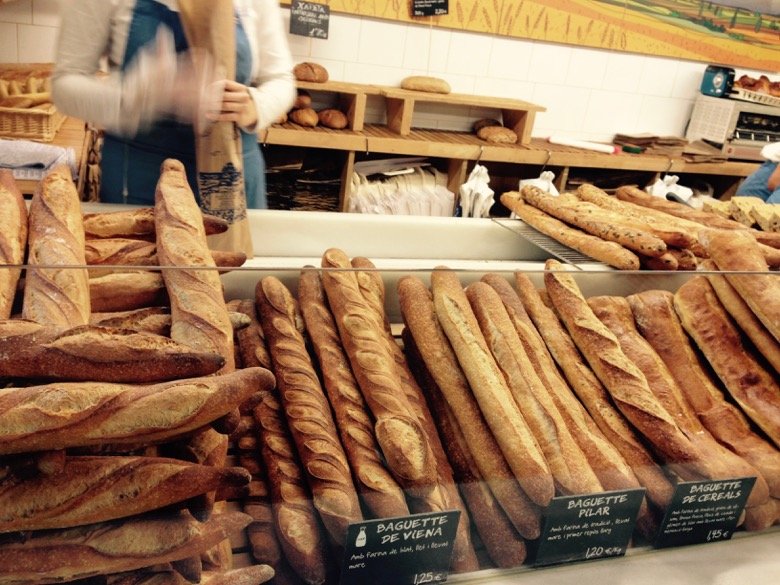
Once you picked up some take-away breakfast, walk down to the beach. My favourite walk is along the coast towards the W hotel. You can’t miss it; it’s the hotel shaped like the sail of a boat. When you walk to this far end of the city beach, you will be treated to a breathtaking view of Barcelona’s coastal skyline. The perfect place to enjoy a breakfast picnic! If you visit in summer, take some time to enjoy the early summer sun and do some sunbathing here. But even in colder seasons, it’s a beautiful spot.
After this refreshing morning walk, I’d think it’s time for some action. Walk back to the busier part of Barceloneta and head to the surf shops on the boulevard. Here it’s time to rent a paddle surfboard and go out on the sea! If it’s cold, rent one in the shops so you can also get a wetsuit. But if you visit in the warmer months, go to Surf House and ask for one of their boards. When you go for brunch/lunch here they allow you to do a 45-minute paddle for free!
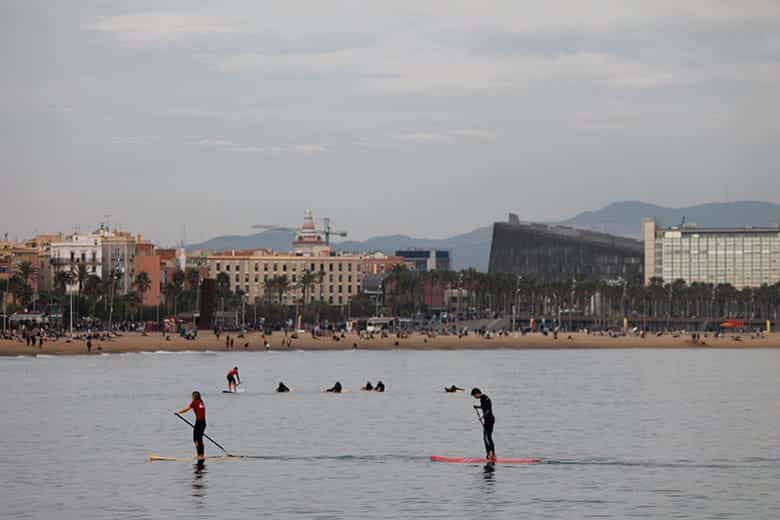
And yes, you will have gotten hungry after some active paddling on the Mediterranean sea! Have a late brunch or early lunch, as you prefer, because both menus at Surf House are delicious and healthy for a good recovery after this active beach morning.
It’s time to leave the beaches and head back to the city centre. Try to avoid the tourist crowds on Passeig de Joan de Borbó when you walk back up and wander through the small streets of Barceloneta. The inner part of this neighbourhood maintained a lot of its character and many old locals can be found enjoying the sunny weather in a chair in front of their house. It will surprise you how local the vibe of these streets is in this tourist area!
Day 2: 14.00 – 19.00
You leave the harbour behind you as you head into the Gothic neighbourhood. It’s the heart of the old centre and a labyrinth of small streets. I still get lost here every now and then, but always get surprised by the historical beauty of the buildings here. Enter “ El Gotico” through the streets behind the post office and allow yourself to get lost a little there. Streets like Baixada de Viladecols show you the typical beauty of this place; cosy squares and leftovers of the city walls are all around.
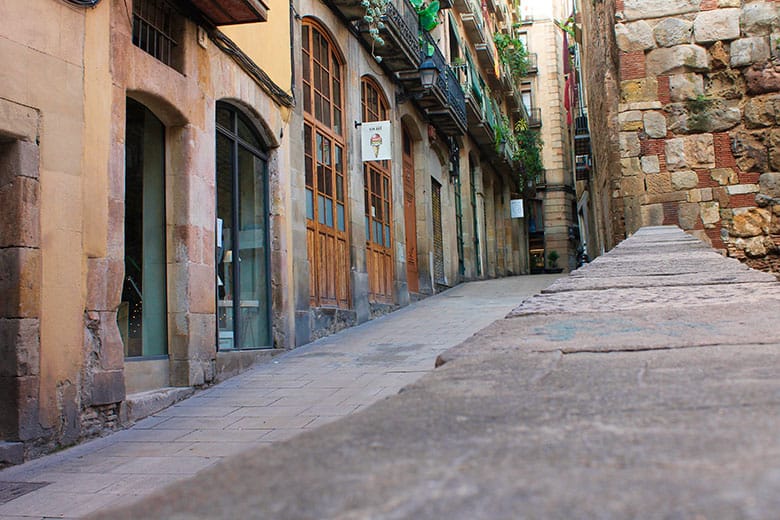
When you arrive at the big street, Carrer de Ferran, turn towards Placa Sant Jaume, where the Generalitat (autonomous government) building and City Hall tower over the big square. Keeping the Generalitat on your left-hand side, move further up into Gotico. Here you are basically behind the huge Gothic cathedral. Although I can imagine your curiosity to see the cathedral’s facade, don’t rush through these streets. First of all, because the acoustics in the streets around the cathedral are very special so you might find many street artists singing or playing. Some amazing, some not that great, but all part of the city culture! Second of all because you don’t want to miss out on a hidden treasure, placa Felip Neri.
Take a left turn on Carrer de Sant Sever and then turn the first street right and you enter one of the most picturesque squares of the city! The church on this square is still heavily marked by the bombs of the civil war. Not many know to find this square, so it’s often a peaceful oasis in the touristic heart of Barcelona.
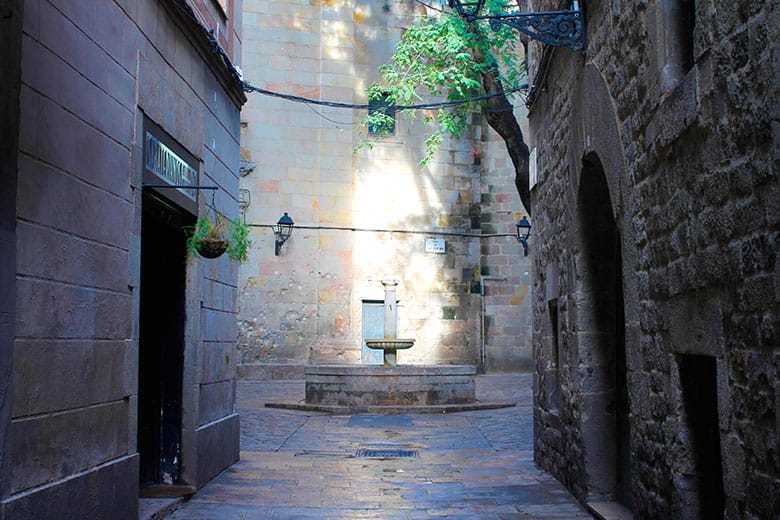
It’s time to continue towards the front of the cathedral. The square is lively and the dramatic backdrop of the building is a hotspot for selfies and photos. It’s also beautiful from the inside, containing even a little orange tree garden, but it can get very crowded if you want to enter the church. Still tempted to go in? Try one of the side entrances, there’s usually no queue there!
The upper part of Gotico, from the cathedral towards Placa Catalunya, is the main shopping area. Not much history going on there, so I would advise you to leave Gotico behind here. Walk further up along Via Laietana and cross the street to enter Carrer de Sant Per Més Alt. Here you can admire Palau de la Musica, a true modernist treasure. Barcelona is famous for Gaudi, but the architect Domenech i Muntaner is just as well known among the locals and with a reason; his buildings easily measure up to the architecture of Gaudi!
Tired? You can enter the small street opposite to the Palau and meet up with the creative crowd of Antic Teatre for a beer under the welcoming shadow of the big tree in their garden.
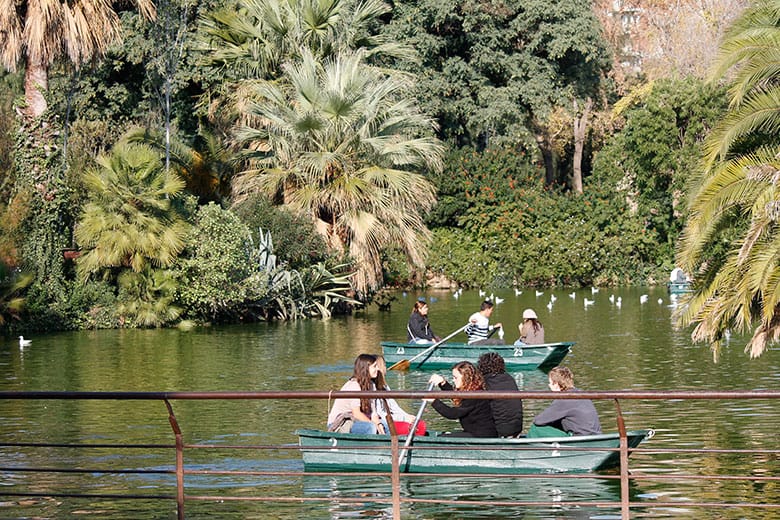
When you regained your strength, walk further into the Born neighbourhood and head towards the famous Parc de la Ciutadella. Since today the brunch was early, you’re probably hungry. Save the tapas for later, but go for some take out food. Around the park are many delicious options such as Pim Pam Burger, Vietnamita or La Taguara. Get yourself a tasty picnic at any of those places and walk into the park.
Parc de la Ciutadella is the perfect spot for an afternoon siesta. The central location of this park attracts a diverse mix of people. Locals come to practice yoga, attend a boot camp, play music or simply hang out with their friends. Whatever you come to do here; to me, it’s like a free circus and it’s my favourite relaxing spot in the centre. There’s so much to see here that you can easily be entertained for a couple of hours. So sit back and enjoy the show, your picnic and some cold beers and have a well-deserved rest after all the walking today
Day 2: 19.00 – …
After the siesta in the park, it’s back to do some more exploring. Leave the park and walk into El Born, another part of the old city where history is all around. When you walk up to the central part of this neighbourhood, take a shortcut through the beautiful El Born Centre de Cultura. It used to be the main market of this neighbourhood, designed in the style of iron architecture. Nowadays it’s a cultural centre and you can see some archaeological remains of the medieval buildings of the city.
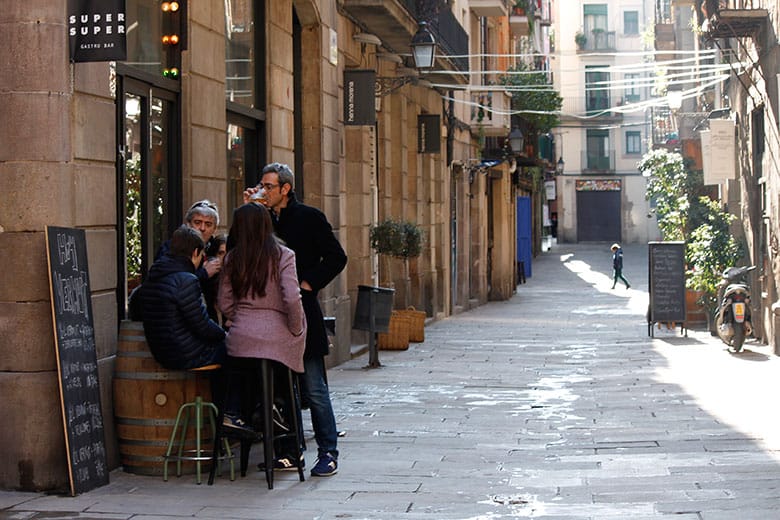
When you exit on the other side, you have arrived in the lively centre of this small neighbourhood, Passeig del Born. There are many bars here but first, wander off into the small streets because this is the best neighbourhood for original and cute small boutiques like La Comercial or Henna Morena. Shops are open until 20.00h or some even until 21.00h so plenty of time to discover some beauties and shop for some souvenirs.
Don’t forget to visit the Santa Maria del Mar, in my opinion, the most beautiful church in town. It was built by and for the poor people of Barcelona, as the rich elite used to go to the Gothic cathedral. You can still see the builders visible on the doors of the church, carrying the stones on their backs all the way from the Montjuic mountain to El Born. Inside the church is impressive; simple but beautifully decorated. Many weddings take place here, you might be lucky and catch a glimpse of them!
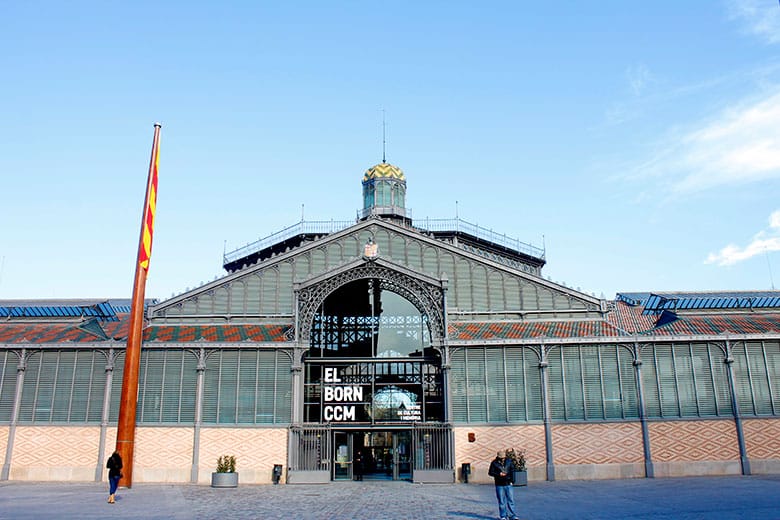
So again, dinner time in Barcelona does not start earlier than 21.00h. If you want to go for tapas, I can recommend Bormuth, a traditional-looking bar where the young city crowd comes together for a beer and some tapas. But El Born offers a wide range of world food. Why not try something more international like noodles at Red Ant or a good old Italian pizza at NAP?
Yesterday you covered the bars in edgy Raval, today it’s time for a fashionable night out. Born is bursting with cocktail bars and so don’t leave the neighbourhood but browse through the streets after dinner for some fancy drinks. One of the best cocktail bars in the world, as they actually have been awarded, is Paradiso. A fun experience, as you enter this bar ‘speakeasy-style’, through the door of the fridge of a Pastrami bar. This is a real upper-class cocktail, and the drinks are not cheap but very special!

More a no-nonsense cocktail type? Then go to Rubi for some home-brewed gin-tonic or cross over to Gotico and go for drinks at Milk. This cosy bar has all the classic cocktails on the menu for a great price and although no official awards have been won, in my opinion, they serve the best cosmopolitan in the world! These are only a few of the many cocktail bars around, but they are all open until the early hours so you have plenty of time to try a few!
